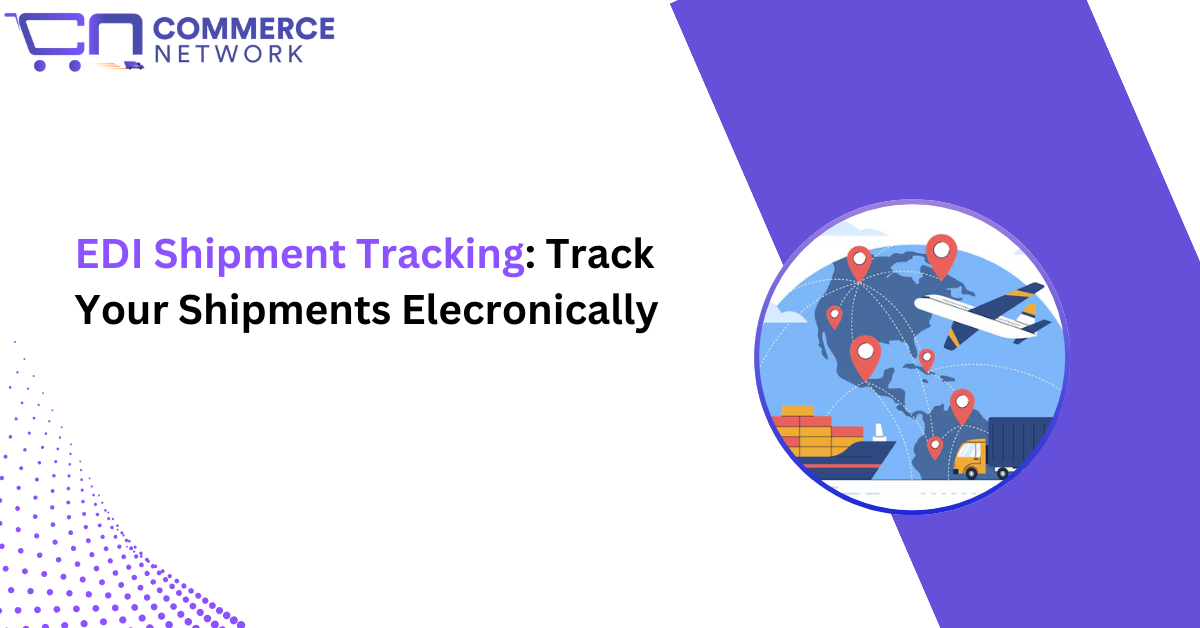
EDI Shipment Tracking refers to using EDI documents when tracking the shipments sent to the buyer. The shipment tracking process starts when the deliveries start getting transported to their destination. EDI documents like Advance Ship Notices (EDI 856), and the Transportation Carrier Shipment Status Message (EDI 214) are generally used for EDI shipment tracking.
Let us discuss the process of electronically tracking shipments with EDI, and related technologies like API, confirm the benefits of EDI in shipment tracking, and talk about how you can implement EDI to track shipments in a large-scale supply chain.
EDI replaces traditional paper-based tracking methods with structured digital communication. Methods like phone calls, manual review of departure and arrival time, checking every once in a while the route and condition of the shipment being transported, etc. are some old ways that EDI has removed.
This has also reduced delays and manual errors through automation and enhanced efficiency in logistics and supply chain operations.
Recommended: Use of EDI in Supply Chain Automation

During the whole shipment process of organizing and tracking, several EDI documents are used for electronic exchanges and compliance.
Here are some of them and how they play key roles in EDI shipment tracking.
1. Before Shipment: Advanced Shipment Notice (EDI 856)
The EDI 856 (ASN) is sent by suppliers before the shipment leaves to notify recipients of pending deliveries. It includes item details (SKUs, quantities), shipment dates, and carrier information.
Purpose: The main goal is to tell the receiver the contents of the shipment and other shipment-related information and make sure that the receiver gets an idea of what is in the shipment.
This increases transparency, makes suppliers ready for delivery, and prepares warehouses for incoming goods.
Impact: Minimization of delays and discrepancies during receipt.
2. During Shipment: Transportation Carrier Shipment Status (EDI 214)
The EDI 214 provides real-time updates from carriers during transit, such as departure, intermediate checkpoints, and estimated arrival times. Key data on this EDI document includes GPS locations, delays, or route changes caused by weather or other factors.
Purpose: The main role is to relay information on the shipment status during transportation. Any problems and issues faced during the actual transportation (e.g. transportation via container ships, or long-distance delivery trucks) are delivered.
Impact: Enables proactive issue resolution and enhances communication between shippers and receivers.
3. After Delivery: Warehouse Shipping Advice (EDI 945)
This EDI document notifies the warehouse about an incoming shipment and provides details for receiving. It confirms delivery completion, detailing received items, timestamps, and condition reports.
Purpose: The main purpose of this document in shipment tracking and delivery is to validate shipment accuracy, trigger inventory updates, and initiate payment processes.
Impact: Allows receivers to efficiently ship goods to their warehouse, making sure all the inventories are stacked up and ready and providing a transparent picture for payment processing.
4. Payment Processing: Freight Invoice (EDI 210): and General Invoice (EDI 810)
Freight Invoice (EDI 210): Specifies carrier charges (weight, distance, fees).
General Invoice (EDI 810): Sent by suppliers for goods/services, aligning with purchase orders (EDI 850).
Impact: Accelerates payment cycles by automating reconciliation.
Learn More: EDI Invoicing Guide
API (Applicable Programming Interface) is another technology that is used in modern times to electronically track shipments from sellers to buyers.
The advantage of APIs is that they are more instantaneous and real-time. While EDI gives the general direction and status of shipments, if one wants to know the exact position or status of shipment then EDI is not enough.
For real-time tracking, a more appropriate solution is the use of API. APIs complement EDI by providing instant visibility into shipment status (e.g., GPS tracking, and temperature monitoring for perishables).
For example, a retailer using EDI can also use APIs to update customers on delivery ETAs.
Most businesses typically use both EDI and API together to enhance shipment tracking and visibility. Combining EDI’s structured and automated system with API’s real-time, dynamic data-driven approach enables smooth and accelerated data flow.
It also allows for instant notifications for error resolutions as well as historical context for checks and verifications. Moreover, this approach enables data synergy whereby EDI ensures compliance with trading partners and API offers granular tracking.
For example, a large manufacturer can ship its products to a supplier via a shipment carrier and use EDI for the shipment process while the receiving supplier can use EDI to verify the shipment details and use API to check in real-time the status of the transport carrier for the products.
With the ability for prompt error resolution, real-time visibility, accurate data exchange, faster decision-making, and seamless monitoring, this approach of EDI-API integration for shipment tracking has become extremely popular among businesses.
Learn more: EDI and API Integration and Use Cases for B2B and B2G e-commerce.

These are just some of the businesses that use EDI to track and monitor their shipments. There are, however, a multitude of businesses, both large and small that choose to, try to, and are compelled to use EDI for shipment and delivery tracking worldwide.
Learn more: The 14-step process of EDI Implementation.
EDI and APIs form the backbone of modern supply chains, offering accuracy, speed, and transparency when tracking shipments. By adopting these tools, businesses can stay competitive in an era where real-time data and automation drive success in transportation and logistics.
Improve Your B2B, B2G, and B2C Ecommerce?
Integrate EDI For Efficiency, Compliance, and Scalability?
Just Curious About EDI?
Give Us A Call
202-280-7060